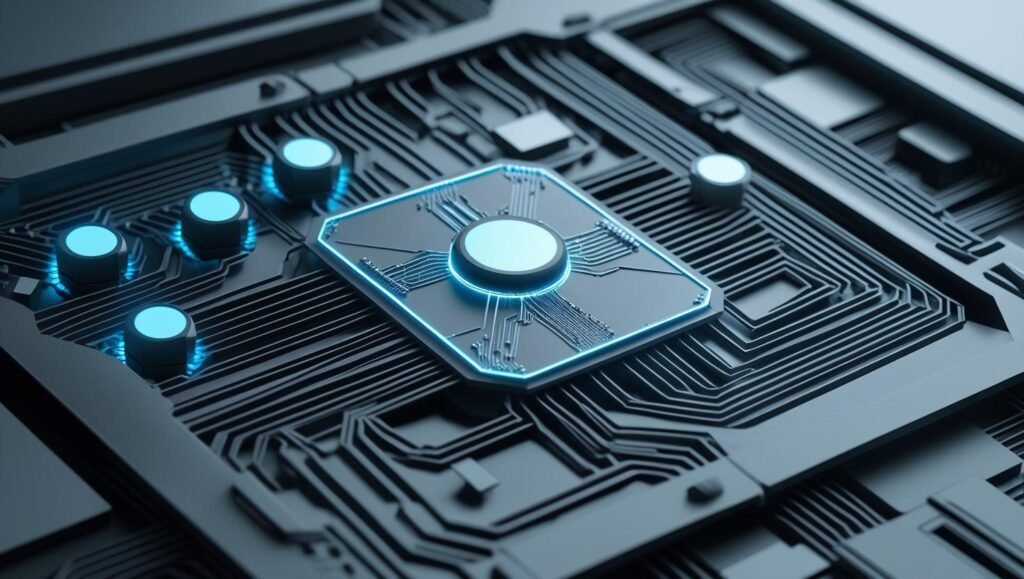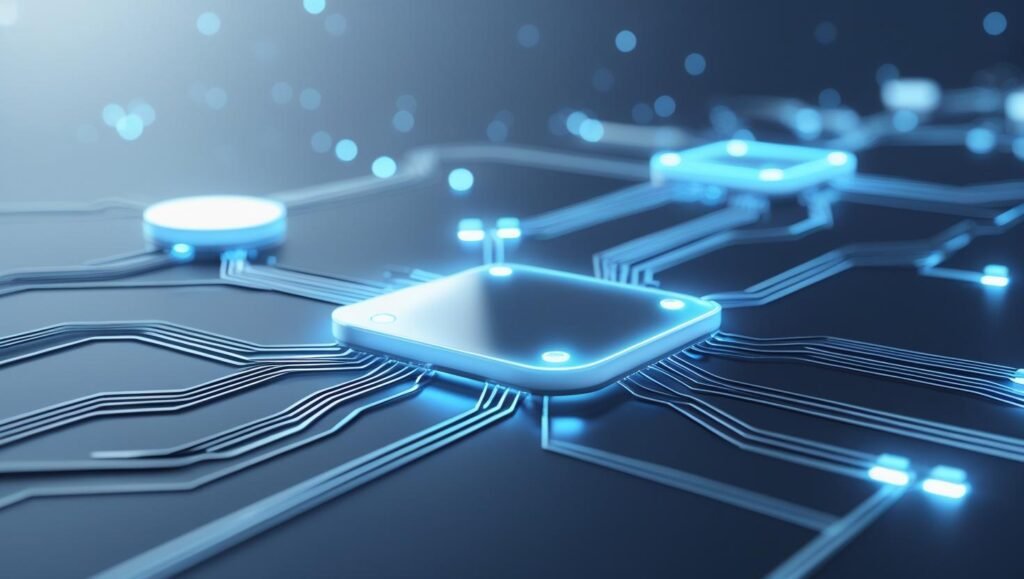Edge Computing Secures IoT Data Privacy

The Internet of Things (IoT) is everywhere—smart thermostats, wearable fitness trackers, and even connected fridges. These devices make life easier, but they also collect tons of personal data. How do we keep that data safe? Edge Computing is a game-changer for protecting your privacy. By processing data closer to where it’s created, it reduces risks and keeps your information secure. Let’s explore how Edge Computing works and why it’s so important for IoT data privacy.
What Is Edge Computing?
Edge Computing is a way to process data close to the device that creates it, like your smartwatch or security camera. Instead of sending all your data to a faraway cloud server, Edge Computing handles it locally on the device or a nearby system. This cuts down on the need to share sensitive information over the internet.
Think of it like cooking dinner at home instead of ordering takeout. You control the ingredients, and there’s no need to send your recipe to someone else. This approach makes Edge Computing a powerful tool for keeping your IoT data private and secure.
Why IoT Data Privacy Matters
IoT devices are always collecting data—your location, habits, or even your heart rate. If this data gets into the wrong hands, it can be used to track you or steal your identity. Hackers love targeting cloud servers because they store tons of data in one place. That’s why protecting IoT data privacy is a big deal.
Edge Computing steps in to help by reducing how much data travels to the cloud. Less data moving around means fewer chances for hackers to intercept it. Let’s dive into how Edge Computing makes this happen.
How Edge Computing Protects IoT Data
Edge Computing keeps your data safe in several practical ways. Here’s a closer look at how it works to secure your IoT devices:
1. Processing Data Locally
When your smart device processes data on its own, it doesn’t need to send everything to a distant server. For example, a smart camera can analyze footage locally to detect motion without uploading every second of video. This means your personal moments stay private.
By using Edge Computing, only essential data (like a summary or alert) gets sent to the cloud. This reduces the risk of sensitive information being exposed during transmission.
2. Reducing Data Exposure
The less data you send over the internet, the safer it is. Edge Computing minimizes how much information leaves your device. For instance, a smart thermostat might only send temperature adjustments to the cloud instead of every detail about your home.
This approach shrinks the “attack surface” that hackers can target. With Edge Computing, your data stays closer to home, making it harder for cybercriminals to access.
3. Faster Response Times
Edge Computing isn’t just about privacy—it’s also about speed. By processing data locally, IoT devices can react faster. A smart smoke detector, for example, can trigger an alarm instantly without waiting for cloud approval.
This speed also improves security. If a device detects a threat, like unusual activity on your smart lock, it can act immediately to protect you. Edge Computing ensures your devices are both quick and secure.
4. Encrypting Data at the Source
Many Edge Computing systems encrypt data right on the device before it’s sent anywhere. Encryption scrambles your data so only authorized people can read it. If a hacker intercepts it, they’ll just see gibberish.
This is especially important for IoT devices like health monitors, which handle sensitive information. Edge Computing adds this extra layer of protection to keep your data safe from the start.

Real-World Examples of Edge Computing in Action
Edge Computing is already making a difference in IoT data privacy. Here are a few examples of how it’s being used:
- Smart Homes: Smart speakers use Edge Computing to process voice commands locally, so your conversations don’t always go to the cloud. This keeps your private chats safer.
- Healthcare Devices: Wearable health trackers analyze your heart rate or sleep patterns on the device itself. Only key insights are sent to your doctor, reducing data exposure.
- Smart Cities: Traffic cameras process video locally to manage traffic flow. They only send alerts about accidents or congestion, keeping other data secure.
These examples show how Edge Computing protects your data while still letting IoT devices do their jobs.
Challenges of Edge Computing for IoT Privacy
While Edge Computing is powerful, it’s not perfect. There are some challenges to keep in mind:
- Limited Processing Power: Some IoT devices, like a tiny sensor, don’t have the power to handle complex Edge Computing tasks. This can limit how much data they process locally.
- Cost of Upgrading: Adding Edge Computing to existing devices can be expensive. Companies need to invest in better hardware or software updates.
- Security Risks at the Edge: If a device gets hacked, local data could still be at risk. Strong encryption and regular updates are crucial to avoid this.
Despite these challenges, Edge Computing remains one of the best ways to secure IoT data. With the right setup, it can overcome these hurdles and keep your information safe.
Tips to Maximize IoT Data Privacy with Edge Computing
Want to make sure your IoT devices are as secure as possible? Here are some practical tips to use Edge Computing effectively:
- Choose Edge-Enabled Devices: Look for IoT devices that support Edge Computing. Check product descriptions or ask manufacturers if they process data locally.
- Keep Software Updated: Regular updates fix security gaps and improve Edge Computing performance. Set your devices to update automatically if possible.
- Use Strong Passwords: Protect your devices with unique, strong passwords to prevent unauthorized access to local data.
- Monitor Data Sharing: Check what data your devices send to the cloud. Adjust settings to minimize sharing whenever you can.
By following these tips, you can boost your IoT data privacy and make the most of Edge Computing.
Comparing Edge Computing to Cloud Computing for IoT
To understand why Edge Computing is so effective, let’s compare it to traditional cloud computing for IoT devices:
| Feature | Edge Computing | Cloud Computing |
|---|---|---|
| Data Processing | Local, on or near the device | Remote, on distant servers |
| Privacy | Less data sent, higher privacy | More data sent, higher risk |
| Speed | Faster response times | Slower due to data travel |
| Security Risks | Local hacks possible, but limited | Large-scale breaches more likely |
| Cost | Higher upfront for device upgrades | Lower upfront, higher for data transfer |
This table shows why Edge Computing is often a better choice for IoT privacy. It’s faster, safer, and keeps your data closer to home.
The Future of Edge Computing and IoT Privacy
Edge Computing is growing fast as more people use IoT devices. Experts predict that by 2030, most IoT devices will rely on Edge Computing for better privacy and performance. New technologies, like AI-powered edge devices, will make local processing even smarter and more secure.
As companies invest in Edge Computing, we’ll see more devices designed with privacy in mind. This means you’ll have more control over your data and fewer worries about leaks or hacks. The future looks bright for keeping your IoT data safe.
Conclusion
Edge Computing is a powerful way to protect your IoT data privacy. By processing data locally, it reduces the risks of sharing sensitive information over the internet. From smart homes to healthcare, Edge Computing is already making a difference in how we keep our data secure. While there are challenges, the benefits—faster responses, less data exposure, and stronger encryption—make it a must-have for IoT devices.
Ready to take control of your data? Start by choosing edge-enabled devices and keeping them updated. With Edge Computing, you can enjoy the perks of IoT without sacrificing your privacy. Stay smart, stay safe!
FAQs
What is Edge Computing in simple terms?
Edge Computing processes data on or near the device that creates it, like a smartwatch or camera, instead of sending it to a distant server.
How does Edge Computing improve IoT privacy?
It reduces the amount of data sent to the cloud, encrypts data locally, and limits exposure to hackers.
Can all IoT devices use Edge Computing?
Not all devices have the power for Edge Computing, but many modern ones, like smart speakers or wearables, are built to support it.
Is Edge Computing completely secure?
No system is 100% secure, but Edge Computing lowers risks by keeping data local and using strong encryption.




